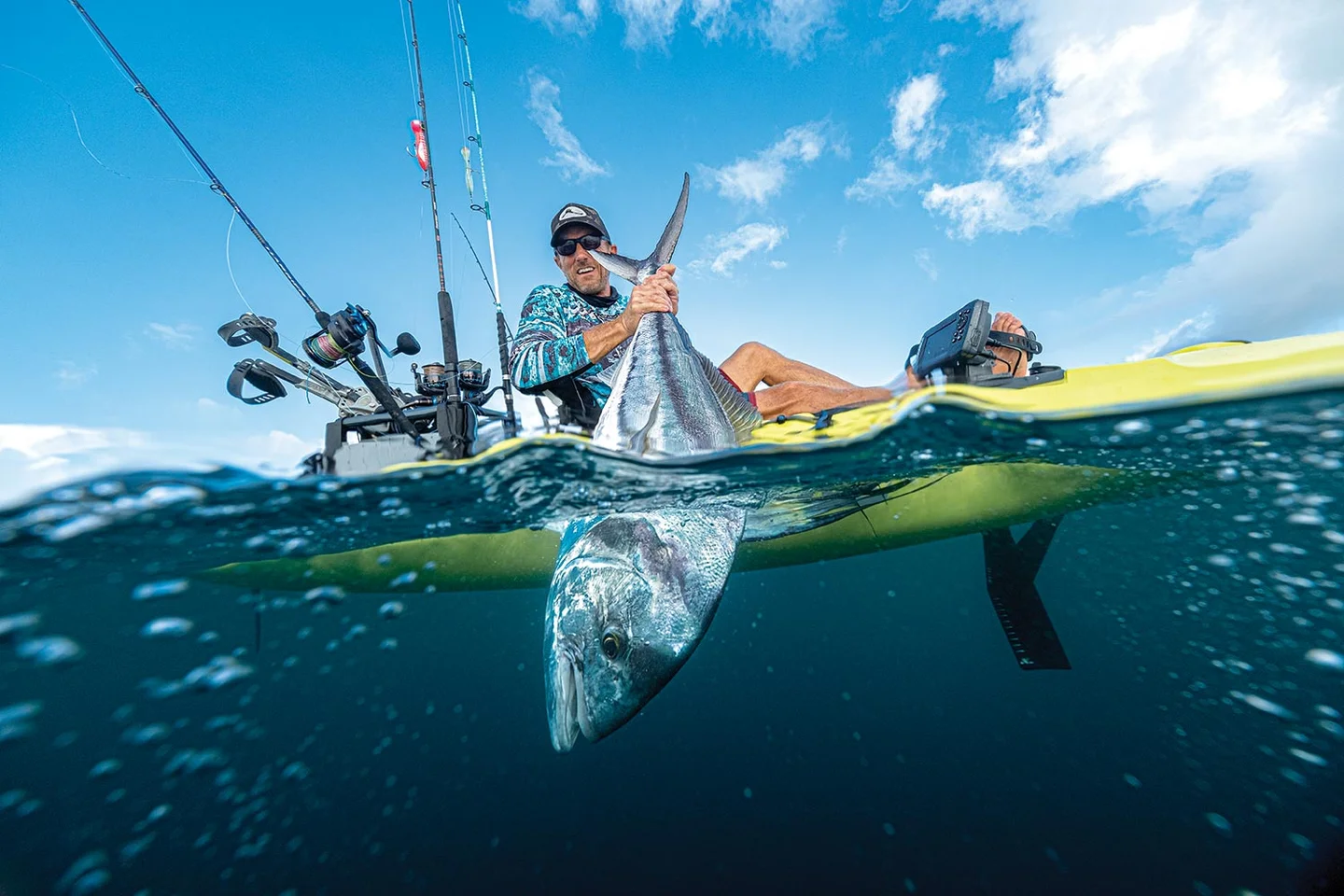
Fishing for sharks is often the quickest and easiest way to hook a big fish from your kayak. There is no need to go offshore which is physically demanding and entails some risk as emphasized by the recent drowning of a kayak fisherman off Sanibel. There’s plenty of shallow, protected inshore waters around Florida, and sharks love them.
Rigging
Stay light. Thirty pound test line is the heaviest you should use and lighter is safer. Sharks get big. You don’t want a sudden strike to flip you out of your kayak. For the same reason, keep the drag light. Most of the time you won’t do a lot of casting, so a stout rod works well. If you go heavier, keep your bow pointed at the bait. This reduces the chances being flipped. Most sharks don’t put up a spectacular fight, but they’re powerful swimmers that can tow your kayak across the surface. Be prepared to go on a “Florida sleigh ride”.
When fishing for sharks, a wire leader is a must. Since you’re targeting smaller sharks, two feet is enough. Use circle hooks. They nearly always embed themselves in the shark’s lip, making them easy to remove. Lures can also be used, especially for blacktip sharks, slow-moving is best.
The Best Bait for Shark Fishing
Sharks are not picky eaters. Any appropriately sized bait used for salt water fishing will work. Movement is not as important as scent with most sharks. All though I have used splashing lures to catch black tips on the flats. As with most fishing, a live bait beats dead. Fresh beats frozen, but with sharks, these rules are not as strict.
A live lady fish under a float is deadly. If it’s too big, a shark will often cut it up for you. Fish in the same place you caught the lady fish. Hook the fish in the tail. You want the bait to stay below the surface. Pelicans, osprey and eagles may dive on it if it’s on the surface. Sharks aren’t the only fish you’ll catch. Big snook, gator trout, tarpon and many others may show up on the end of your line.
Kayak Shark Fishing Techniques
Keep your line taunt while waiting for a hit. This will help keep the shark from swallowing the bait. You don’t want him hooked deep. You’ll realize how important this is when you try to remove the hook.
A chum bag will bring in more action, but has its drawbacks. Occasionally a big shark will hit the bag. Have a way to quickly release it. It’s also a drag when chasing a shark, and it uses up the limited storage space on a kayak. It’s really not needed.
You can drift or anchor. It’s easier to chase the shark if you’re not anchored. This is often necessary since you’re using a light line. Even with 20# test the shark may pull you, another reason to avoid anchoring. When fishing for sharks from a kayak, a push peddle, or pedal one is a huge advantage when you want that quick start, as you can hold the rod and go. Otherwise, put the rod in a holder and paddle like crazy. You’re about to get an intense aerobic workout.
Chasing a shark with your rod in the rod holder is tricky. The goal is to keep the line taunt without a lot being peeled of. Once the shark has tired, you can think about retrieving line. Keep the rod tip as high as possible. Shark skin is abrasive and their tail can rub through a light line.
Sight fishing on the flats when the water is clear is a blast, more like hunting than fishing. Here a dead bait and a rod that will make long casts works best. There are a lot of blacktip sharks in the Keys, in fact they’re everywhere. Lures are a lot of fun with them. If you get tired of not catching bonefish and permit, a battling blacktip can save the trip.
Removing the hook safely can be a challenge. Sharks bite. They act lifeless, then suddenly twist around and grab you. Nurse sharks are infamous for this. More people in Florida are bitten by nurse sharks than any other shark.
Be careful! Sometimes the wise choice is to cut the line. Most fisherman hate to do that. If you’re going to remove the hook, make sure you secure the shark first. Reaching into the net with your pliers is the first step to disaster. Use heavy long-handled pliers. Sharks are tough and so is their skin. Working from a stable platform such as another boat or land is a big help. Having an assistant is great. He can hold the shark while you take out the hook. That way if you get bit, you can blame him.
